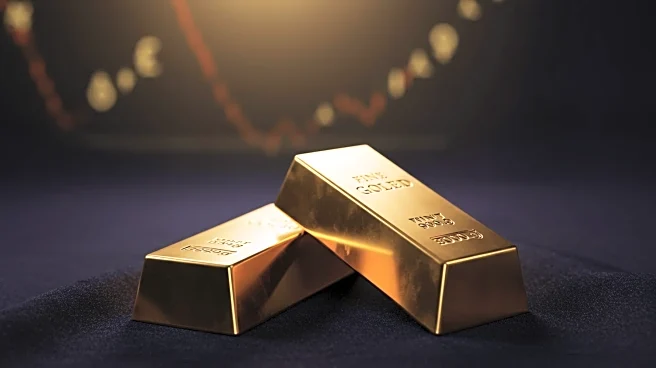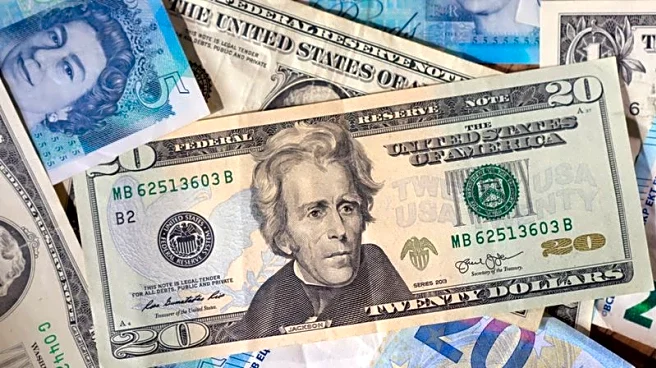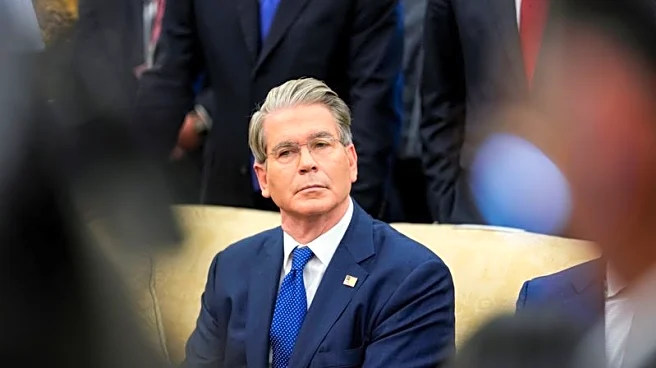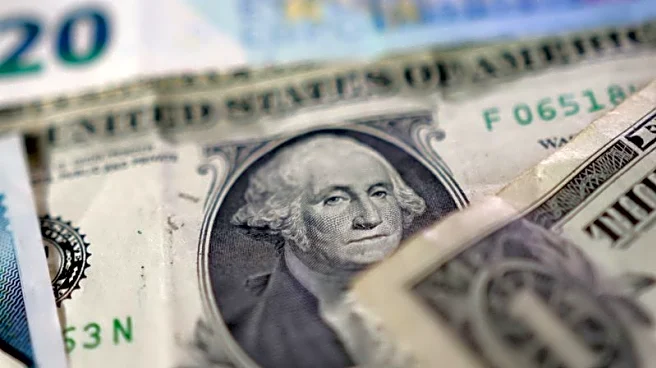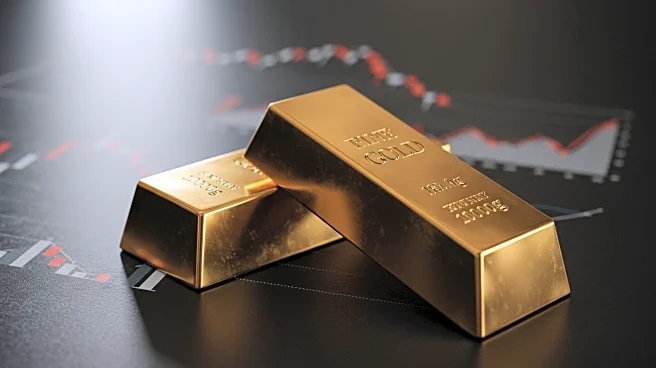What's Happening?
The precious metals market has seen muted volatility recently, with gold futures showing modest gains. This trend is largely driven by the U.S. dollar's weakness, which has declined against major trading partners. Gold futures advanced by 0.27% in response to this dollar weakness, highlighting the inverse correlation between gold prices and currency fluctuations. The market is currently in a consolidation phase, with macroeconomic factors like dollar strength or weakness dictating price direction. August has marked a departure from the summer's trading pattern, with gold gaining 1.94% in the first thirteen days, largely due to the dollar's 2.25% decline. Treasury Secretary Scott Bessent has advocated for a 50-basis-point rate cut in September, which could influence Federal Reserve policy and impact gold prices.
Why It's Important?
The potential rate cut by the Federal Reserve could create a favorable environment for gold prices, reducing the appeal of dollar-denominated Treasury securities. This monetary policy shift is significant for investors, as it may lead to a sustained rally in the precious metals market. The dollar's weakness has been a primary driver of gold price movements, and further declines could enhance gold's attractiveness as an investment. Market participants are closely monitoring Federal Reserve communications, as policy signals will likely remain the primary driver of gold prices. A dovish surprise could spark a breakout in gold prices, while a hawkish pivot could extend the current sideways trading pattern.
What's Next?
Investors should keep an eye on Federal Reserve communications for policy signals that could impact gold prices. The anticipated rate cut in September could provide the catalyst for a breakout in gold prices. If the Federal Open Market Committee implements a substantial reduction, it may break gold out of its current trading range. Conversely, any hawkish policy shift could prolong the consolidation phase. The precious metals market is positioned for potential changes, depending on monetary policy developments.
Beyond the Headlines
The broader implications of a rate cut include potential shifts in investment strategies, as investors may seek alternatives to dollar-denominated assets. The relationship between gold and the dollar highlights the interconnectedness of currency markets and commodity prices. The anticipated monetary easing could also influence global economic conditions, affecting trade and investment flows.



